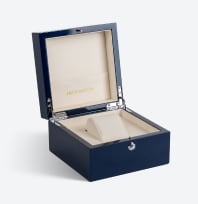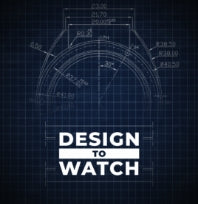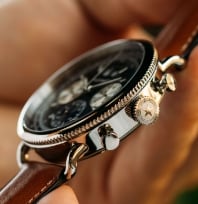Pilots presented the topic of watch technology in the early twentieth century. At the time, men were still wearing pocket watches, and the wristwatch wasn't the accepted staple it is today. Aviator watches are incredibly popular and appreciated today for their utilitarian beauty and sharp legibility. However, the aviator watch is more of a style preference than the critical instrument watches initially used by the pilots in the early days of the flight. Aviator watches were born out of necessity.
A Brief History of the Aviator Watch
In 1904, Santos-Dumont-a Brazilian aviator-planned and designed what has become known as the first-ever pilot or aviator watch with Cartier. As a pilot, Santos-Dumont needed a secure way to keep time without withdrawing his hands from the flight controls. This first watch design was a small gold square face and exposed screws.
However, a wristwatch was still not considered masculine, and it was not until WWI's trench warfare, that men began tying their pocket watches to their wrists with bands to have easy access to their timepiece and improve accuracy during organized attacks.
Throughout the years, the pilot's watch has seen innovations that make the work of the aviator much simpler. These innovations were great feats of mechanical engineering, the bases of modern flight computers, all wrapped up in a beautiful and functional device that was small enough to sit on your wrist.
Complications, such as circular slide and chronograph, were introduced to meet the demands of ever-changing flight complexities. Aviator watches have a basic military design paired with complications that are exclusive to aviation to make their watch more useful during flight for the wearer.
Aviator Watch Iconic Design Attributes at a Glance:
- Big and Legible Dial - A Pilot must be able to read the time quickly and accurately no matter the weather during day or night flights. Many pilot watches have broad, dark dials with contrasting numbers or indices.
- The Luminosity - Pilot watches require readability for night flight. So the hands are usually coated with a luminous coating to increase their visibility at night.
- Oversized Winding Crown - A large crown allows the pilot to grasp and wind the crown even while wearing pilot gloves.
- Extra Bezel Markings - Additional markings on the bezel, such as a small flight device, which can help with measurements such as fuel burn and wind angle correction.
- Dual Time or GMT Functions - Most pilot watches have a dual time or GMT complication to control different time zones or synchronized universal time.
Clearly visible indicators are a distinctive characteristic of pilot watches. A prime example would be the Jack Mason Pursuit watch. With a pilot's watch, the dial is often reduced to bare necessities. In most cases, Roman or Arabic numerals with striking luminescent hands so the watch can be read at a quick glance, even at night.
The Flyback Chronograph
A Flyback Chronograph is a pilot's necessity because it saves time while recording several different timings in a row. The flyback chronographs, like the one on our classic Avigator watch, return to zero and restart instantly with a single button. Due to the conventional stop-reset-start sequence involving 3 operations (thus pressing the pusher 3 times), the Flyback moves through all phases by pressing the reset button once. These quick resets helped navigate the waypoint and check the map, enabling the "on the move" transition pilots.
The Slide Rule Bezel
The slide rule bezel, the Breitling invention for its Chronomat watch, is a mechanical calculator for pilots – a kind of pre-digital-era mini-computer – that allows for all forms of in-flight calculations. Slide Rule Bezels are centered on a fixed scale on the dial with a second, mobile scale on a bi-directional bezel, this mechanism can be used to calculate temperatures, or as a standard tachymeter to calculate how much distance could be traveled over a period of time. This was extremely important to flight and air travel before we had traffic controllers and computerized flight modules.
The red marker often attached to this fluted rotating bezel is a count-up or count-down bezel to monitor navigation or the distance a bomb will travel. After all, these watches were military instruments. Pilots depended on charts to determine when to hit certain landmarks. Putting the red marker to the minute side, they could quickly read the elapsed times.
The Introduction of the Conical and Onion Shaped Crown
Pilots flew in unheated cockpits during the early days of aviation. Exposure to intense cold means they were equipped with thick gloves to keep their hands from freezing. You can see a clear example of a conical shaped crown on our high contrast, black PVD plated version of the Pursuit. The prominent crown was a crucial feature for the simple operation of the watch, even with gloved hands. This is why most pilot watches were fitted with oversized crowns, with two recurring shapes: onion or colical.
GMT
A more modern, non-military feature also seen on aviator watches is the GMT. The GMT gives the ability of the pilot to keep track of multiple time zones. The GMT is indicated by means of an additional hour hand revolving on a 24-hour scale and read on the two-tone bezel indicating day and night. Most of us have traveled through various time zones and recognize the value of a pilot's ability to track multiple locations. A fine aeronautical watch will have a GMT hand that rotates every 24 hours in comparison to a hand that rotates every 12 hours.
As a pilot, you want to make the right estimates. Aviation watches were originally designed to endure the rigors of air battles where split-second decisions are practically a matter of life and death. And when you look down at the aviator watch, you're going to need to be able to see the readings, even at a glance.
The Classic High Contrast Dial
Like the field watch, the aviation watch is usually equipped with full-number markers that are easy to read at a glance. The hands of the watch are just as big, and there should be no question of where they are pointing. For watch cases in the mid 40-44mm diameter range, there is also a lot of real estate on that face to show the data as plainly and as quickly as possible.
Faraday Cage and Magnetism
Mechanical watches are at risk when they are exposed to magnetic fields. Protection against this negative effect is therefore required for all-purpose tool watches, but even more so when it comes to aviator watches, the cockpit is one of the most magnetic environments a watch can experience. Traditionally, anti-magnetism was accomplished using the Faraday cage principle: a soft iron inner cage covering the force and shielding it from magnetic fields.
While aviator watches got their start as a scientific instrument, the unmatched attention to detail and style of the aviator watch has lived on to influence an entire class of watches available on the market. Most aviator watches today do not need all the functionality of their predecessors, but their inspired durability and readability paired with the complex intricacies of eras past make this watch a pillar of the avid watch connoisseurs collection.
Sources:
https://www.mens-folio.com/67145/history-of-the-pilot-watch/
http://www.thejewelleryeditor.com/watches/article/aviator-watches-best-where-to-buy









